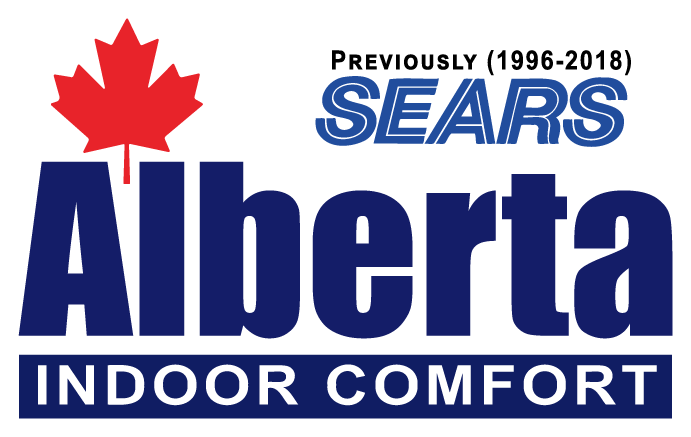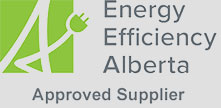
As Alberta gears up for another dry, hot season, the threat of wildfires and wildfire smoke looms large across many communities. Whether you're in Calgary, Lethbridge, Red Deer, or anywhere across Southern Alberta, the impacts of smoke on your health and home comfort are becoming a recurring seasonal challenge.
But while you can’t control the weather or wildfires, you can control the air inside your home. Here's how wildfire smoke affects your health, what you can do to reduce its impact, and why indoor air quality solutions are more important than ever.
Why Wildfire Smoke Is a Growing Threat in Alberta
Over the last few years, Alberta has experienced longer and more intense wildfire seasons. Dry conditions, strong winds, and hotter summers have led to a surge in both natural and human-caused wildfires. Even if you're far from the flames, the smoke travels—sometimes for hundreds of kilometres.
This year, forecasters have already warned of early-season fire risk due to ongoing drought conditions and low snowfall across the province. That means residents need to prepare not just for fire safety—but for smoke exposure too.
What’s in Wildfire Smoke—and Why It’s Dangerous
Wildfire smoke contains a mix of harmful substances, including:
- Fine particulate matter (PM2.5) – Tiny particles that penetrate deep into the lungs and bloodstream
- Carbon monoxide – Can reduce oxygen levels in the body
- Formaldehyde, benzene, and other toxins – Released when man-made materials burn
- Allergens and irritants – Worsen asthma and respiratory conditions
Even brief exposure to wildfire smoke can cause: - Coughing, sore throat, and irritated eyes
- Chest pain, wheezing, and shortness of breath
- Headaches, fatigue, and dizziness
- Increased asthma attacks or heart issues in vulnerable individuals
And for children, seniors, and people with respiratory or heart conditions, the risks are even higher.
Can You Rely on Closing Windows Alone?
While keeping windows closed during smoke events is a smart first step, it’s not enough.
Smoke particles are extremely small—PM2.5 is 30 times smaller than a human hair—and can seep through tiny gaps, cracks, and even the ventilation system. That’s why indoor air quality solutions are your best line of defense.
How to Prepare Your Home for Wildfire Smoke
Here are practical steps to keep your indoor air clean and your family safe:
1. Upgrade Your Air Filtration
Install high-efficiency HEPA air filters in your HVAC system. HEPA filters are capable of trapping 99.97% of particles as small as 0.3 microns, including wildfire smoke.
For added protection, consider a whole-home air purifier that works with your furnace or ductwork to continuously clean indoor air.
2. Seal Air Leaks and Gaps
Weatherstripping doors, sealing gaps in windows, and inspecting your attic insulation can significantly reduce smoke infiltration. A Home Guardian Safety Check can identify vulnerable spots.
3. Use Portable Air Cleaners
In high-traffic areas like bedrooms or living rooms, a portable HEPA purifier can provide targeted air cleaning when wildfire smoke levels are high.
4. Monitor Air Quality
Apps like AirVisual or government resources like Air Quality Health Index (AQHI) give real-time updates on local air quality, so you know when to take extra precautions.
5. Avoid Activities That Pollute Indoor Air
During smoke events, avoid burning candles, using gas stoves, or smoking indoors. These activities can worsen already poor air quality.
6. Add Ventilation Only When Safe
Mechanical ventilation and ERVs/HRVs help keep fresh air circulating. However, when outdoor air quality is poor, ensure these systems are filtered or temporarily adjusted to avoid drawing in polluted air.
Why Indoor Air Quality Solutions Matter More in Alberta
Calgarians are no strangers to wildfire smoke events. In 2023, Calgary experienced multiple air quality advisories due to smoke drifting from northern Alberta and BC. Many families found themselves staying indoors, using fans or makeshift filters, and still experiencing respiratory discomfort.
By investing in long-term air quality solutions—like duct cleaning, air purifiers, and whole-home filtration—you can ensure year-round protection from not just smoke, but also allergens, mold, and seasonal pollution.
Breathe Easier, Live Healthier
As a family-run business, Alberta Indoor Comfort understands that your home is your safe haven. That’s why we’re committed to helping you create a healthy, comfortable space—especially when the outdoors become unpredictable.
Our IAQ Experts can help with:
Whole-home air filtration systems
HEPA furnace filter upgrades
UV and germicidal solutions
Ventilation checks and duct sealing
Ready to Protect Your Home from Smoke?
Book a FREE indoor air quality consultation or schedule your Home Guardian Safety & Health Check-Up today. Let’s make sure your home is ready before wildfire season peaks.
Your home is supposed to be a safe place—but invisible threats like radon can undermine your family’s well-being without warning. So don’t wait.
Because you deserve a home that gives back as much as you do
We Specialize in Senior Accessibility
Give us a call to find out more about how we help with age-in-place


Resources & References:




DID YOU KNOW ?
More studies show that cognitive function was shown to be up to 50% worse in environments with higher carbon dioxide concentration, which is a symptom of insufficient make up air.
Consult our Experts to enhance your home to a great learning environment.
Proudly Serving Greater Calgary, AB















